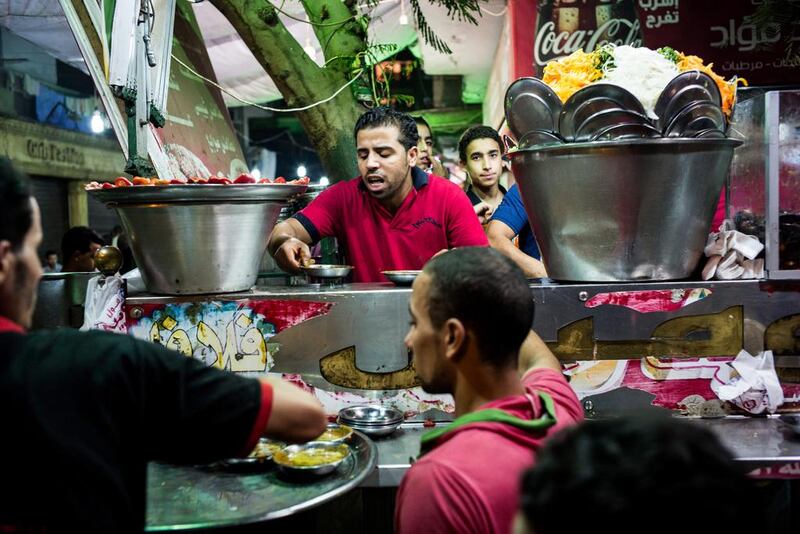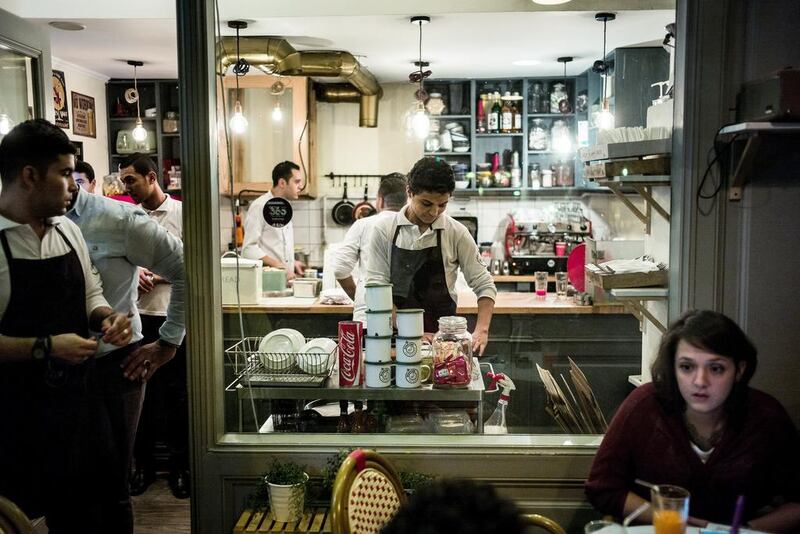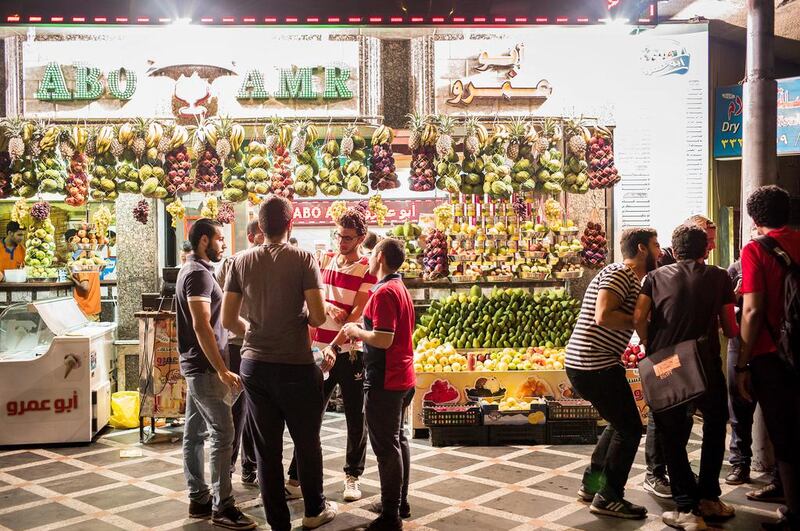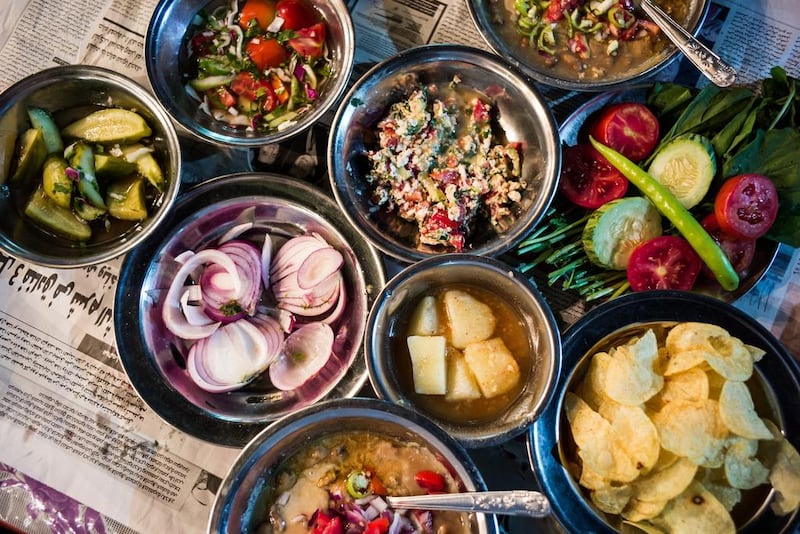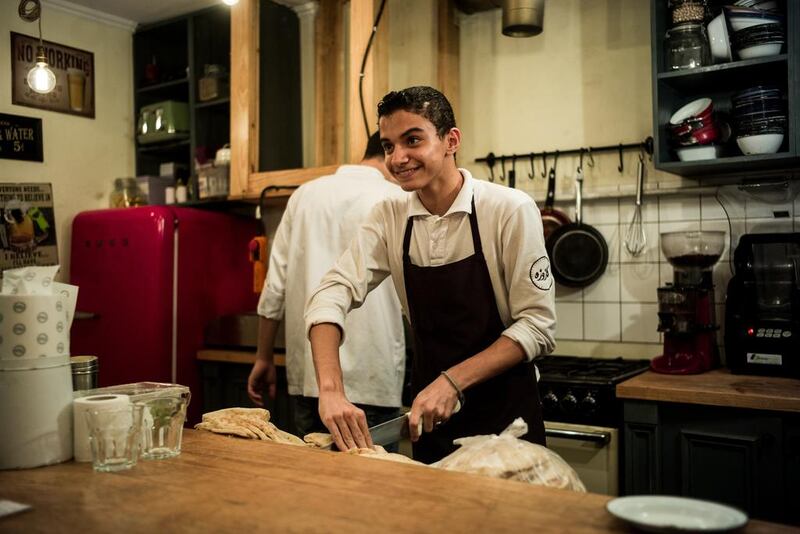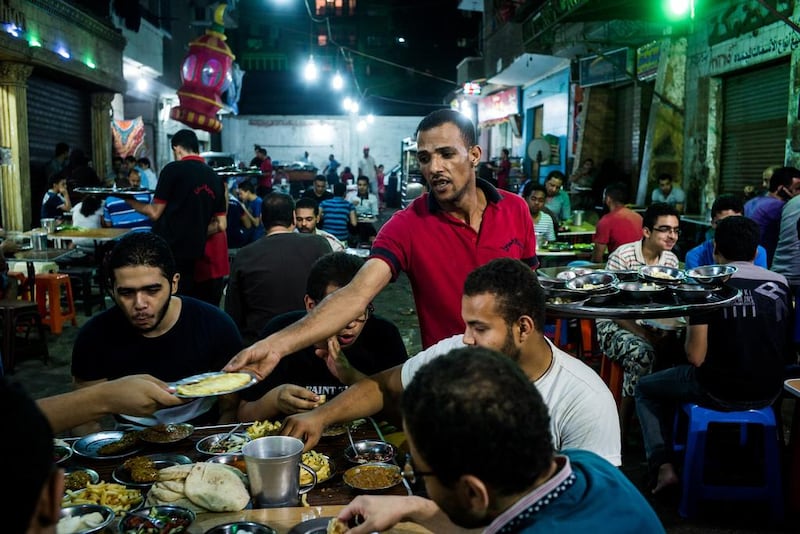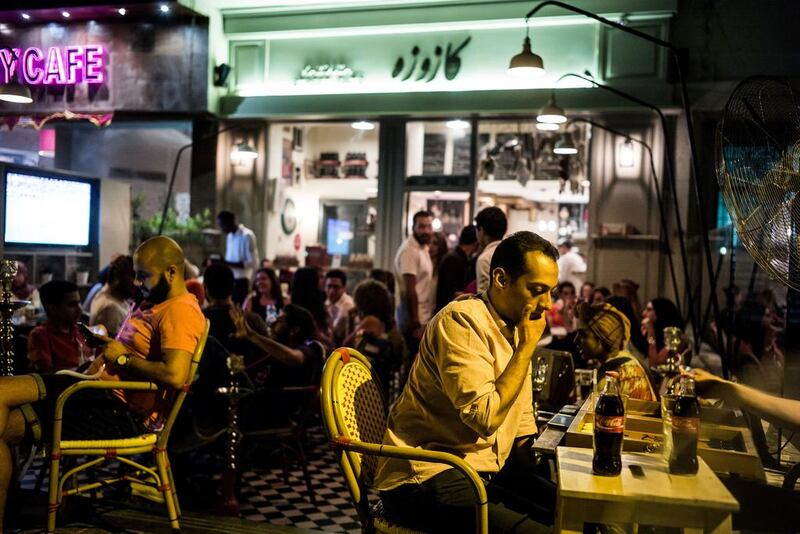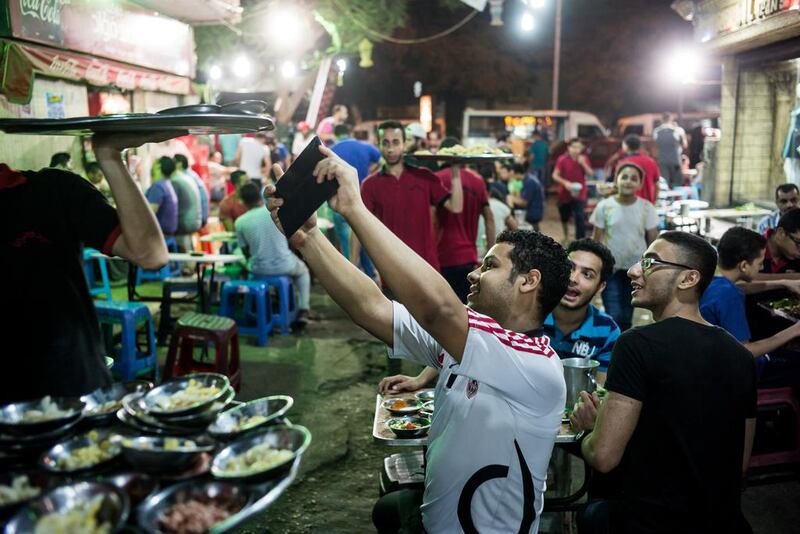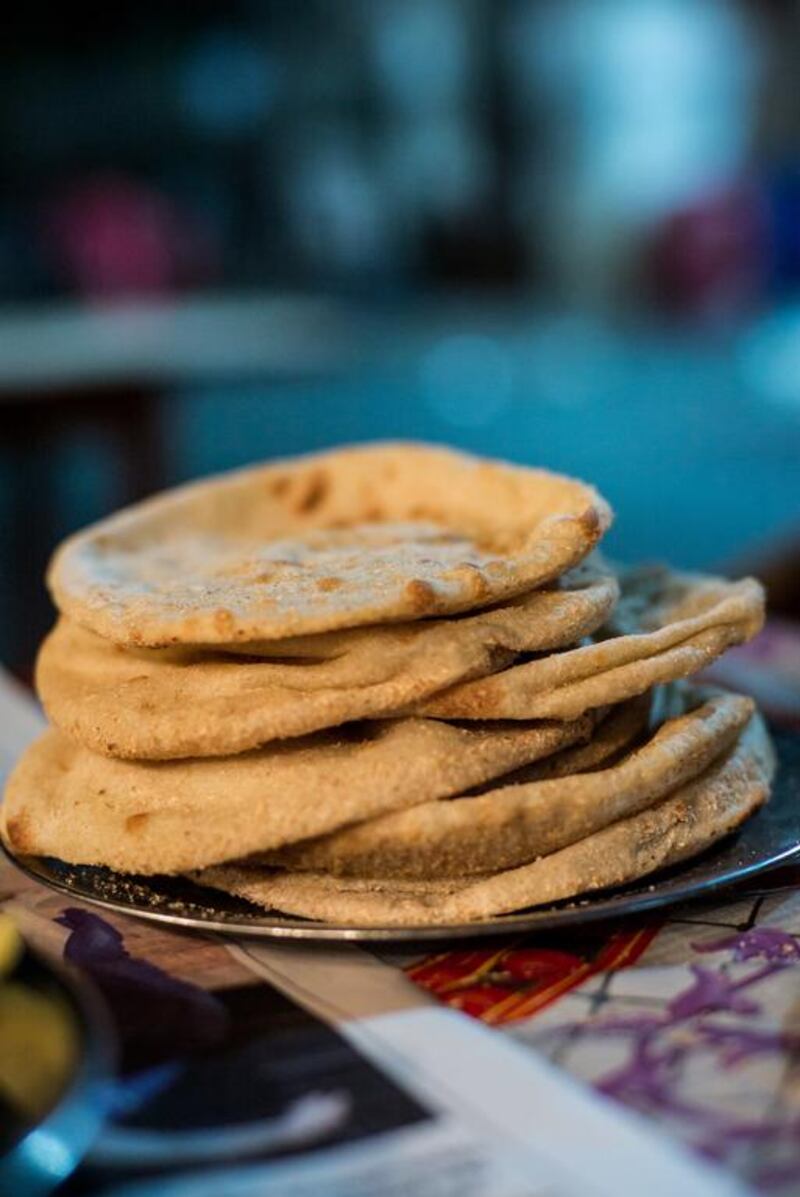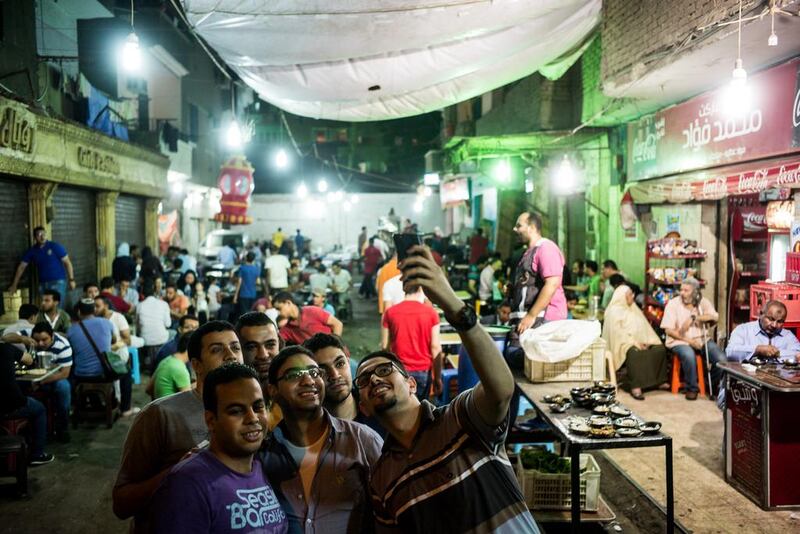CAIRO // Across Cairo in Ramadan, ahead of the predawn call to prayer, Egyptians flock to their favourite restaurants across town for suhoor before the first bursts of light at dawn usher in a new day of fasting.
Wimby: an economical meal
Wahid Sayyed’s weapon of choice in running his restaurant is a green laser pointer. Standing on a small platform, he gets a bird’s-eye view of his whole establishment, including an idle waiter.
To get the waiter’s attention, he shines the green beam into his eyes, before pointing it to the table where new customers should sit.
There’s too little time and too much noise to get his workers’ attention otherwise.
It’s 1.15am and Wimby, in the north Giza district of Imbaba, is buzzing with life. Egyptians are sitting down for suhoor, the predawn meal packed with calories to help them get through the next day’s fast. Wimby’s foul, felafel and fries are just the trick. A small plate of each is 4 Egyptian pounds (Dh1.88).
This restaurant operates on volume – on an average night Ahmed, Wahid’s brother, says they’ll push out 200 kilograms of foul.
Empty cartons that once held eggs are everywhere, and fresh produce is continuously offloaded into the kitchen from rickshaws on the street to keep up with the brisk business.
Seated on colourful stools that are brought out in two-metre stacks, diners are demolishing the dozens of small plates of food on their table. Aside from foul, felafel and fries, the menu offers eggs, pickled aubergine, and salad made of pickled cucumbers and tomatoes.
Each table also has a large tin pitcher of drinking water, taken from a barrel full of ice that sits under Wahid’s brown apron-covered potbelly, embroidered with the restaurant’s name and jingling with change.
“We eat suhoor here three or four times every Ramadan, for a change of scene,” says Hassan Al Banna, 54, the owner of a home decor shop, whose family eats the same kind of foods when it has Suhoor at home. For his family of eight, a meal at Wimby costs between 70-80 pounds.
“People come here for fresh and clean local food, they come from the end of the world,” says Ismail Sayyed, a waiter at Wimby. By the end of the world, he really means other districts in Cairo.
Kazouza: gentrified local food
In recent years there’s been a growing trend of gentrifying local foods among Cairo’s eating establishments.
Kazouza, located in the affluent district of Maadi, south of Cairo, is one such place. It’s on Road 9, the suburb’s main strip of upscale restaurants. The retro-inspired decoration exudes faux authenticity, just like its food.
It’s nearly midnight on a Sunday night, and still a bit early for suhoor but the tables are packed with diners having drinks and smoking shisha. In a few hours, they’ll be eating foul but paying twice the amount they would at Wimby.
The premium is ostensibly for the more comfortable seats and the swank. Here, patrons pause to enjoy the atmosphere rather than eat and leave, as they take in the sounds of gurgling shishas and the dice of backgammon.
“I usually have foul, omelettes and felafel for suhoor, but things like sausage and kofta for iftar,” says Mohamed Badr, a banker, here with his beagle Gizmo.
He’s about to leave to eat suhoor at home after hanging out with his dog at Kazouza, and plans to end his night with yogurt, which Egyptians say helps with heartburn from a heavy meal and with thirst the next day.
City Drink: fusion blends
In Dokki, the Giza neighbourhood across the Nile from downtown, Ezz Al Monofy is closed. The dusk-to-dawn sausage and liver cart is usually packed, but it appears nobody wants to end the night with its fino bread sandwiches.
Down the street at City Drink, a group of students are gathered to substitute yogurt with the stall’s juices. It’s not unusual for City Drink to cause traffic jams all the way to Tahrir Square as patrons double park on the main thoroughfare to pick up their beverages.
Frustrated drivers that look to see what’s causing the hold-up are blinded by the bright halogen lamps.
The establishment, officially named Abou Amr, serves drinks that are more like liquefied versions of fruits, rather than juices. In addition to the conventional oranges and mangoes, blenders here are turning everything from rocket leaves to cake snacks like Twinkies, into drinks with names like Donald Duck, Hummer and Viagra.
But Abdel Rahman Tarek, a 19-year-old student, is here for the Radaat, which translates to something like “baby bottles”.
Its base is sobiya, a coconut drink made with powdered milk that is mixed with ice cream into “lion milk” by adding bananas, or “elephant milk” by adding chocolate.
Foul Mahrous: foul fare
During the rest of the year, Foul Mahrous is the only place to sit down for a late night meal in Garden City, just south of Tahrir. The neighbourhood is mostly banks, large hotels and early 20th century apartment buildings, and has few amenities.
Mahrous usually serves people from the neighbourhood and usually waits on about 5 tables or so, but during Ramadan, it can serve up to 30 tables as people from the wealthier districts such as Zamalek and Mohandiseen come here for suhoor.
If Kazouza tried to manufacture the authentic experience of Wimby and charged more for making it comfortable, then Mahrous preserved the authenticity and simply charged more.
Foul here goes for 10 pounds, plus an obligatory 20 pounds for salad plates of rocket, tomatoes, radishes and romaine lettuce, alongside sides of pickled potatoes, aubergine, Areesh cheese and homemade potato chips.
Patrons can also choose from a wide variety of foul here: from Alexandrian foul topped with sliced chillies, tomatoes and onion then dolloped with tahina, to a rich foul with ghee or a foul with linseed oil.
“Binshutter,” one of the crew tells the patrons in Arabic, indicating that they were shuttering the place. He hurries them, as they chug down water and smoke their last cigarettes before the call to prayer.
foreign.desk@thenational.ae
